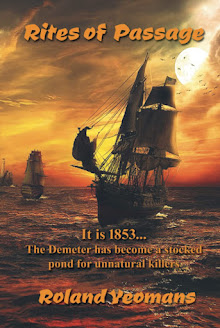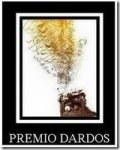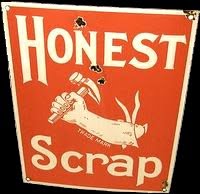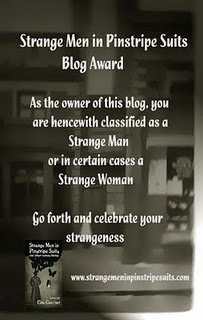
What am I going on about now?
Exactly.
Dialogue ... in our novels to be exact.
The best words are actions, of course. But that doesn't mean your significant other doesn't want to hear the words. "I love you."
In the cartoon above Calvin doesn't say he trusts and loves his mother. His actions show it.
But you and I both know she'd probably like to hear it from him sometime.
I.) Good dialogue is essential in our novels if we want to succeed.
A.) What is good, "draw in the reader" dialogue?
B.) It is not actual speech.
1.) we pause.
2.) we drift
3.) we stray or become confused and stammer.
C.) It is not the State of the Union Address either.
1.) No blunt instrument of prose
2.) No chunky, thick paragraphs.
D.) It is a reflection of real speech :
1.) It is the distillation of actual speech
2.) Think of it as a pruned bonzai tree of real conversation.
III.) We interrupt each other
1.) People break into the words of the other or plain talk over one another in a "listen to me now" barrage of words.
2.) No taking polite turns in real life.
3.) So aim to have the other person respond to the other character after every line.
4.) It won't always be possible, but you should never let a person talk for more than 3 lines.
5.) Why?
6.) Never tire the eye of the reader (especially the already tired eye of the agent!)
III.) Good dialogue reveals the character of the person talking
A.) Surface message reveals
B.) The intent of the speaker.
IV.) Good dialogue reveals the inner heart and mind of the speaker while moving the story forward at the same time.
V.) Good dialogue gets to the gut level of the character speaking, defining her experience of what is going on around her and her reactions to it.
A.) Having your character's every other line questioned or reacted to by another ...
1.) creates a deeper, more dramatic story.
2.) creates more complex, more "real" characters.
3.) drawing the reader into believing the reality of your fictive world.
B.) You don't have to get this exact in your draft.
1.) Leonard da Vinci sketched the bold outline of his complete image in bold sweeps at first.
2.) He later refined and added depth after the whole composition was sketched on his canvas.
3.) That is what you do with your prose canvas.
4.) Trying to get your dialogue spot-on in the draft will only end up blocking you up.
VI.) Good dialogue requires rewriting.
A.) Rewriting in dialogue is cutting.
B.) Think of it as going on a word diet.
1.) Cut out every word you can do without as you would calories.
2.) Cut out going back for dessert :
3.) No seconds for your favorite words and phrases. One to a conversation.
C.) Read aloud your dialogue
1.) Listen to the rhythm of the interplay between the characters.
2.) Each character should have their own distinct rhythm of talking.
3.) Each character should have their own distinct way of expressing themselves.
a.) their favorite words and phrases should be different than the others in the conversation.
b.) their differing mindsets, educational background, their prejudices, their passions should mold their words into being distinctive to themselves.
VII.) Doing all that will make your conversations in your novel seem real, drawing the reader into becoming immersed into your story, perhaps even having them feel that the moment is actually happening.
What did George Bernard Shaw say of an irritating actress at a party? "The trouble with her is that she lacks the power of conversation but not the power of speech."
***
And now, just because I wanted to hear it again :
Exactly.
Dialogue ... in our novels to be exact.
The best words are actions, of course. But that doesn't mean your significant other doesn't want to hear the words. "I love you."
In the cartoon above Calvin doesn't say he trusts and loves his mother. His actions show it.
But you and I both know she'd probably like to hear it from him sometime.
I.) Good dialogue is essential in our novels if we want to succeed.
A.) What is good, "draw in the reader" dialogue?
B.) It is not actual speech.
1.) we pause.
2.) we drift
3.) we stray or become confused and stammer.
C.) It is not the State of the Union Address either.
1.) No blunt instrument of prose
2.) No chunky, thick paragraphs.
D.) It is a reflection of real speech :
1.) It is the distillation of actual speech
2.) Think of it as a pruned bonzai tree of real conversation.
III.) We interrupt each other
1.) People break into the words of the other or plain talk over one another in a "listen to me now" barrage of words.
2.) No taking polite turns in real life.
3.) So aim to have the other person respond to the other character after every line.
4.) It won't always be possible, but you should never let a person talk for more than 3 lines.
5.) Why?
6.) Never tire the eye of the reader (especially the already tired eye of the agent!)
III.) Good dialogue reveals the character of the person talking
A.) Surface message reveals
B.) The intent of the speaker.
IV.) Good dialogue reveals the inner heart and mind of the speaker while moving the story forward at the same time.
V.) Good dialogue gets to the gut level of the character speaking, defining her experience of what is going on around her and her reactions to it.
A.) Having your character's every other line questioned or reacted to by another ...
1.) creates a deeper, more dramatic story.
2.) creates more complex, more "real" characters.
3.) drawing the reader into believing the reality of your fictive world.
B.) You don't have to get this exact in your draft.
1.) Leonard da Vinci sketched the bold outline of his complete image in bold sweeps at first.
2.) He later refined and added depth after the whole composition was sketched on his canvas.
3.) That is what you do with your prose canvas.
4.) Trying to get your dialogue spot-on in the draft will only end up blocking you up.
VI.) Good dialogue requires rewriting.
A.) Rewriting in dialogue is cutting.
B.) Think of it as going on a word diet.
1.) Cut out every word you can do without as you would calories.
2.) Cut out going back for dessert :
3.) No seconds for your favorite words and phrases. One to a conversation.
C.) Read aloud your dialogue
1.) Listen to the rhythm of the interplay between the characters.
2.) Each character should have their own distinct rhythm of talking.
3.) Each character should have their own distinct way of expressing themselves.
a.) their favorite words and phrases should be different than the others in the conversation.
b.) their differing mindsets, educational background, their prejudices, their passions should mold their words into being distinctive to themselves.
VII.) Doing all that will make your conversations in your novel seem real, drawing the reader into becoming immersed into your story, perhaps even having them feel that the moment is actually happening.
What did George Bernard Shaw say of an irritating actress at a party? "The trouble with her is that she lacks the power of conversation but not the power of speech."
***
And now, just because I wanted to hear it again :


























































































































































































Great advice. I work on dialogue a lot, I'm a stickler for having it sound natural for the time period.
ReplyDeleteCasting away the precious words that have been gathered is difficult, but, as you say, necessary. Many good pieces of advice here :-)
ReplyDelete"2.) Each character should have their own distinct rhythm of talking.
ReplyDelete3.) Each character should have their own distinct way of expressing themselves.
a.) their favorite words and phrases should be different than the others in the conversation.
b.) their differing mindsets, educational background, their prejudices, their passions should mold their words into being distinctive to themselves."
Including that in dialogue takes a novel to the next level. It's sometimes subtle but always important. And rarely is it easy to accomplish.
Wendy : I'm a stickler for dialogue, too. Robert B. Parker and Raymond Chandler taught me how much more good dialogue adds to a novel's reading pleasure. My, you're up late.
ReplyDeleteJabBlog : Hey, either you're an early riser or a stay-up-real-late person, too. It hurts to part with words you have come to love in your dialogue. Just like parting with those dessert calories! LOL. But in the end, it is good for us.
Terry : Like you said, creating realistic dialogue for each character does bring our novel up to the next level. It hurts. But that pain hopefully gain us the representation of a great agent. It only takes one crucial YES to make our writing dreams come true. Thanks for visiting and commenting. It means a lot to me, Roland
That quote is funny! And that section of Calvin and Hobbes always makes me sad. (I know most of C & H by heart and I know what happens next). Sigh...
ReplyDeleteGreat advice about dialogue. I say it out loud and if it doesn't readily roll off my tongue, I have to go back and fix it.
Of course, I need an ESL class. Working with wee ones has totally ruined my ability to speak coherent English, LOL! But, for real :)
Have a great week!
Words Crafter : Ah, but it puts you in touch with the child within you. Not a bad trade. Can you believe it? I'm just now getting into Calvin and Hobbes. So many of the strips are new to me. LOL.
ReplyDeleteYou have a great week as well, Roland
Roland- I would love to host you on a blog tour- I feel very privileged that you asked me.
ReplyDeletemy e-mail is ladywriter1 at yahoo dot com
let me know what time frames you are shooting for and what you have in mind.
Summer : I'm still in the planning stages. I'm thinking sometime in March for about 12 days -- like the 12 days of Christmas LOL. I'm a bit like Indiana Jones in this : I'm making it up as I go along. Thanks for agreeing to join in the fun and madness, Roland
ReplyDeleteGood dialogue will do it for me every time--MINUS the annoying TAGS.
ReplyDeleteAn excellent post, as always, Roland!!
Thanks, Ann. Your praise means a lot coming from you. Have a great new week, Roland
ReplyDeleteIf you're just getting into C & H, you gotta check out the snowmen strips. They're awesome!!!
ReplyDeleteI put many of them on my blog back in the summer somewhere....
Words Crafter : That's what got me into Calvin & Hobbes in the first place : your blog's snowmen strips. Isn't that neat?
ReplyDeleteTo me dialogue brings the story to reality, I didn't know about the three dialogue rule?
ReplyDeleteImagery Imagined : You are so right. Good dialouge does bring your novel to life. And there're are really few rules in writing - just guidelines. You don't want to confuse the reader with a lot of talkers at once, nor do you want to bash the reader's eye with a thick segment of unbroken dialogue.
ReplyDeleteThanks for visiting and commenting. I missed you around here. Roland
Great post! Dialogue is a tricky thing to get right.
ReplyDeleteThanks for sharing.
Yes, Gary. I find getting the dialogue just right to be extremely tricky. I'm happy you liked my post, Roland
ReplyDeleteI'm glad I stumbled onto your site. I’m writing a novel with only dialog, and sometimes the writing gets tough. The difficulty in keeping the voices separate and distinct can be daunting. Your advice has been a great reminder of where I want to go and how to get there.
ReplyDeleteRay : A novel with only dialogue? My hat's off to you. That is some challenge you've set for yourself. Robert B. Parker was a master of making chapters nearly all dialogue and pulling it off, though his dialogue tags got in the way too often. I wish you luck in your dream -- may your book be such a success it stuns you. Roland
ReplyDelete